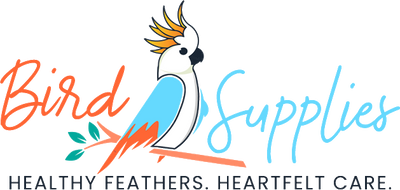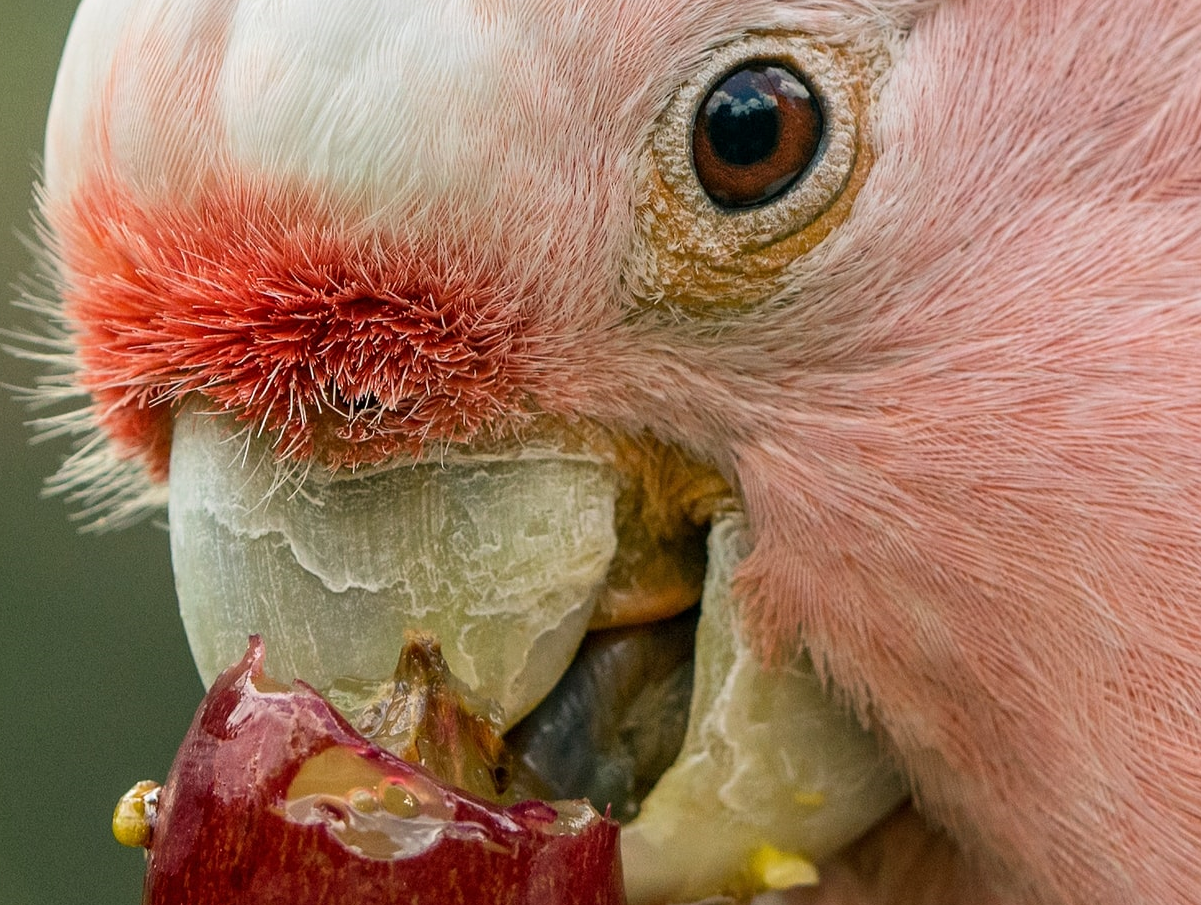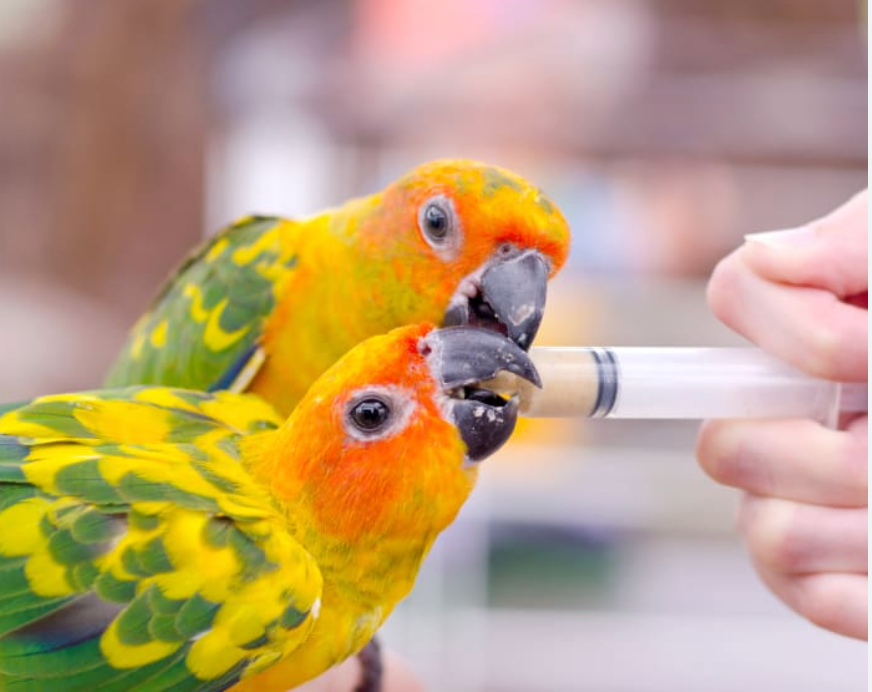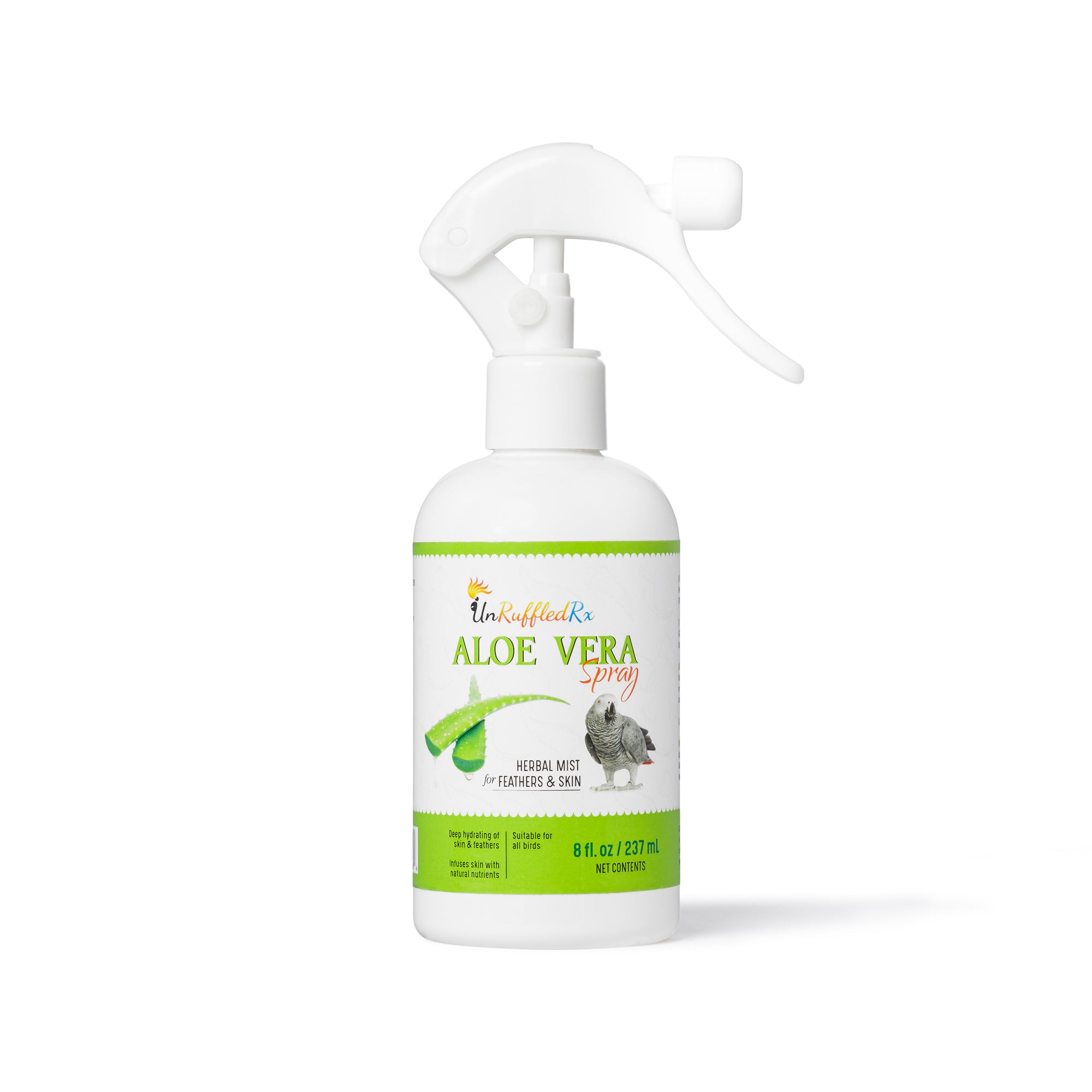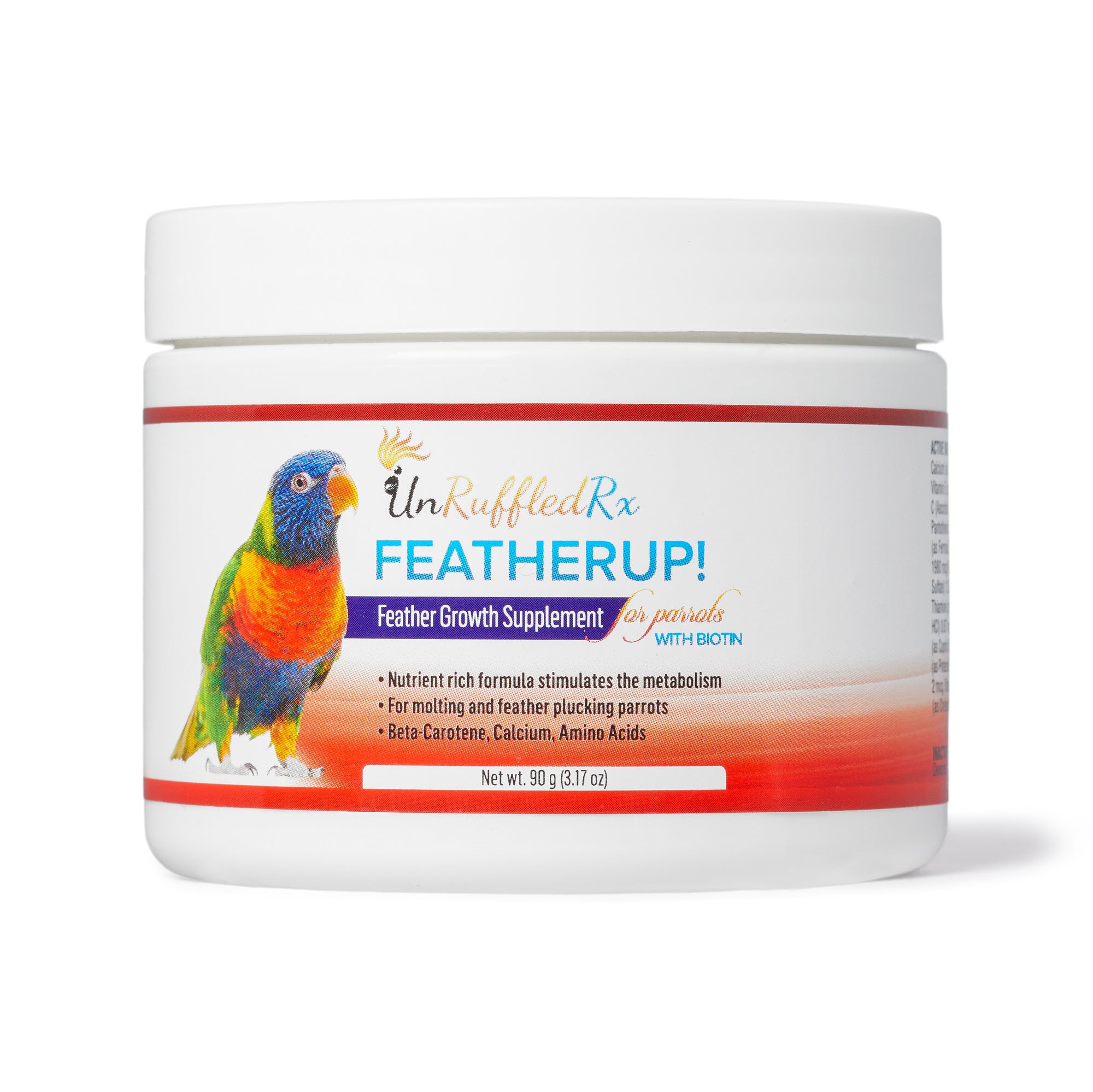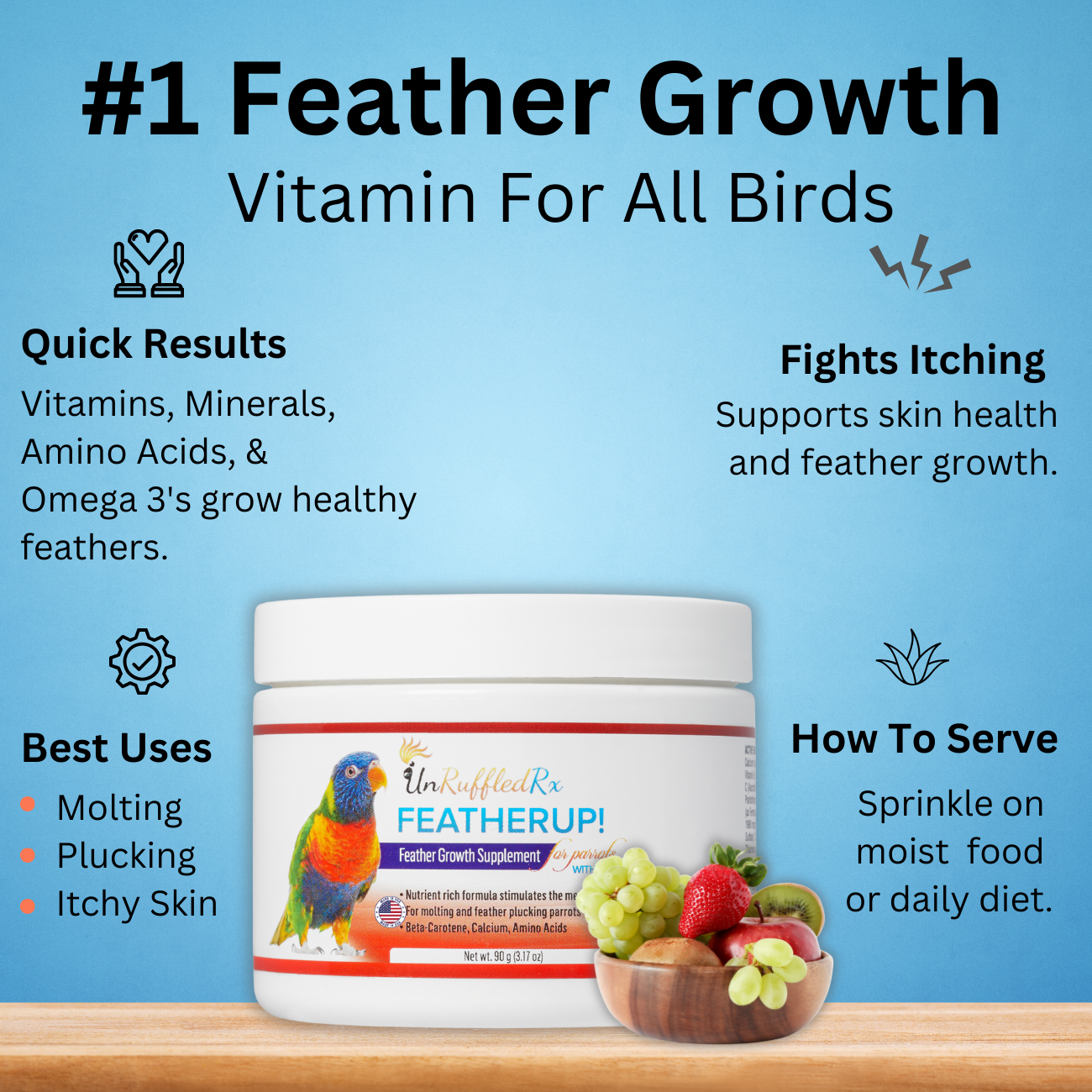Table of Contents
- What is bird self mutilation?
- Why do birds self mutilate?
- Stressors that cause bird self mutilation
- 10 secrets that help curb bird self mutilation
Bird self-mutilation is a tough and heartbreaking challenge for many bird owners, but understanding why it happens is the first step to helping your feathered friend heal. Pet birds are incredible companions, but unlike cats or dogs, they’re still considered exotic animals with unique care needs that we can’t ignore.
Because their natural instincts and physical needs remain intact, birds can sometimes struggle in a home environment. In fact, studies show that 36% of bird owners face behavioral issues, with the most common being feather plucking or, even more concerning, self-mutilation. But don't worry—this guide will walk you through how to get a handle on bird self-mutilation and help your bird live a happier, healthier life.
WHAT IS BIRD SELF MUTILATION?
Bird self-mutilation is when the animal eats into its own skin and muscle tissue. This alarming problem is termed a “stereotypical behavior.” When humans engage in self-harm behaviors, we call it a compulsive behavior.
Do you know the traits of a compulsive, stereo-typical behavior? Here are the traits of a compulsive, stereo-typical behavior
- Repetitively engages in the behavior
- Repeats the behavior over and over despite harmful consequences
- There is a sense that your bird can’t control the behavior
- The bird experiences an intense urge or craving to perform the behavior
- Your bird may seem to get a sense of pleasure from the behavior
Zookeepers often see a lot of 'stereo-typical' behaviors in animals that are under a lot of stress. These behaviors are signs that the animal is suffering mentally and physically. Luckily, zookeepers can use some of the same tactics that psychiatrists and behaviorists use to get the animal out of their negative routine.
People can adopt these maladaptive behaviors, too. For example, think about people cutting themselves or the bewildering problem of pulling one's hair out.
These behaviors resemble those seen in birds performing feather picking or self-mutilation, and we can apply human research to determine the causes and what supports this behavior in our birds.
WHY DO BIRDS SELF MUTILATE?
Feather plucking and self-mutilation aren't diseases in themselves.f. Instead, these behaviors are signals that something is off in your bird's life. When a bird feels stressed or uncomfortable, it turns to these destructive actions as a coping mechanism.
According to Berls (2019), "Feather destructive behavior, which can lead to self-mutilation, is a multifactorial condition with a large number of possible medical, behavioral, and environmental causes."
Your bird could be stressed out with:
- Medical problems
- Chronic pain
- Environmental or social stress
- Nutritional deficiencies
- A mental health issue
- Or, any combination of the above
Pinpointing the root cause is crucial when addressing bird self-mutilation. Many owners hope there’s just one thing causing their bird's behavior, thinking a single fix will make it stop. But in reality, it’s often a mix of stressors that overwhelm the bird, leading to this behavior.
That’s why a systematic approach is key to getting bird self-mutilation under control. By addressing all potential factors—from health and nutrition to environment and mental well-being—you can create a path toward real improvement for your bird's quality of life.
|

Imagine your bird's stress like air filling a balloon. A little air is normal, but when too much builds up, the balloon can’t handle the pressure and eventually pops.
The same goes for your bird. A little stress is part of life, but when it’s too much or ongoing, it can overwhelm your bird’s physical and mental health, leading to serious issues. Just like a balloon that bursts under pressure, your bird’s well-being can crash when stress levels get too hig
10 SECRETS THAT HELP CURB BIRD SELF MUTILATION

Infographic Developed by Diane Burroughs, LCSW (2019)
Maslow's Hierarchy Of Needs was developed for people in the 1940s. But today, even pets deserve a life full of fulfilled needs. The model depicts that when an individual is deprived of its most basic needs it affects other areas of their life as well. So we can take Maslow's original model for people and adapt it to our pet birds.
1. Meet Your Bird's Biological Needs
Each of life’s creatures requires that they fulfill their fundamental biological needs in order to survive, and parrots are no exception. When a parrot’s fundamental biological needs are met, the bird experiences a sense of physical and emotional well-being, which gives him the sense of security he needs to move through his daily routine.
Pet birds are exotic pets. It's difficult to make sure they receive the proper nutrition, sleep, and exercise required for them to thrive. And these bird-care deficiencies expose the bird to discomfort, anxiety, and despair. He develops a high level of stress that impacts his or her daily routine.
|
An annual veterinarian checkup is part of preventative care that will help set up your exotic pet for success. Another thing you can do is establish daily in-home care routines to support your pet's wellbeing.
This is so crucial because birds have completely different body systems than mammals. That means that they require different care requirements, too.
For parrots, that means the following
- Species-specific dietary needs
- Adequate sleep
- Hormone regulation
- Adequate exercise
- Age-related needs
- Proper foot health
- Proper skin and feather care
Dr Susan Friedman and other bird behaviorists have determined that ensuring parrot health is the first step in dealing with difficult bird behaviors.
When your bird is happy and healthy, you’re removing the physical, emotional, and environmental stressors that can all add up to create unsettling bird behavior. In other words, you’re setting your bird up for success!
2. Promote Environmental Wellness
Taking good care of your pet bird is vital to its overall well-being. There is overwhelming evidence from The Richard M. Schubot Parrot Wellness and Welfare Program that taking care of the following 6 areas will help maintain both their physical and mental health.
- Preventative care
- Diet & Nutrition
- Behavioral Training
- Environmental Enrichment
- Pediatric & Geriatric Care
- Pain Prevention and Management
Learn more about how to meet these needs in my video on parrot wellness.
The purpose of environmental enrichment is to improve a pet bird’s quality of life by supporting its natural instincts and needs for well-being, so providing plenty of it to him/her is crucial.
Parrots are smart problem-solvers with a lot of energy. Avian enrichment involves providing your birds with physical and social enrichment. From a physical standpoint, provide a wide array of foraging activities, sensory enrichment toys, and exercise opportunities. From a social standpoint, provide one-on-one and family time, behavioral training, and visual and auditory stimulation.
Did you know that healthy feathers are vital to your bird's overall health? When birds feel good about themselves, they're more productive and more emotionally happy.
One of the best ways to increase your parrots’ self-confidence is to use positive training methods to teach the bird foundational behaviors of how to be a parrot, plus manners and tricks. Birds trained with positive methods can regain their joy in life.
This training strategy draws the bird into it; it allows the bird to relax and feel more at ease around you. I encourage my followers to teach their birds tricks with Clicker Training for Birds. Clicker training bridges the communication gap between you and your bird by reiteratingdesired behaviors with a clicker sound and reward.
Positive bird training has many benefits. First of all, you’ll quickly learn how to spot desirable behaviors and reinforce them while letting unwanted behaviors slide. If you reinforce one behavior, it increases the chance that the bird will do that exact behavior repeatedly. Reinforced behaviors will eventually fall to the wayside.
Birds get their self-worth from learning the “flock rules.” Picture yourself easily teaching your bird ‘basic manners’ such as coming out of the cage on cue, going poop in a specific place, leaving certain items alone, staying on its play stand or returning to its preferred spot.
Plus the clicker-training method makes training your bird to accept grooming chores like bathing or trimming nails, touching their bodies, wearing a harness, eating vegetables, and taking medication a breeze. Imagine how much easier bird care will become when your bird stays calm and untroubled with important daily bird care tasks.
A second great benefit of bird training is that you'll learn to read your pets body language so that you can tell if an undesired behavior has been triggered. Reading parrot body language is essential for uncovering the environmental factors that cause your bird stress and anxiety.
When you train your bird to perform these essential skills, it won’t have to get all stressed out. In fact, it will be looking forward to receiving positive reinforcement and being willing to comply. Every time you reduce stress on your pet, you are reducing the risk of him/her self-mutilation.
3. Provide Plenty of Enrichment Opportunities
A lot of birds live in large flocks in their natural habitat. As you may or may not have already guessed, socialization and enrichment are actually very important to their well-being. After all, flock members provide some sense of safety in numbers, and often they work together to find food sources, nesting sites, and so on.
Make sure that you're providing your parrot with plenty of socialization and lots of enrichment everyday. A busy bird has less time or desire to self mutilate. Make sure to reinforce all play and foraging activities.
Consider taking your bird outside for sunshine each day when the weather permits. A bird play stand is a really great investment and is a fun way to get your bird to just socialize with the family. Try to ensure that everybody in the family socializes with the bird so it doesn't become overly attached to one specific person.
Plus while you’re away, you can add a little extra audio and visual stimulation by leaving it on TV or radio. My birds absolutely LOVE watching Bird TV for Parrots on YouTube. This video series features a variety of captive-bred parrots socializing, chirping, and playing all day long. It's a great way to teach your bird natural, safe parrot behaviors.
Learn about the many ways you can feed your bird from foraging toys. Foraging toys require your bird to actively figure out how to retrieve desired food and treats from puzzles and bowls, keeping your pet engaged and entertained. They promote physical activity, movement, and mental stimulation.
The idea in this case is to keep your parrot entertained all day long with fun, natural parrot behaviors to minimize any feeling of isolation or boredom. Plus, of course, you’ll want to work in some early evening routines so that your pet can socialize with the family before bedtime.

4. Be Proactive
Immediately after picking up signs of self-mutilation, pack your bird up and take it to an avian vet for a thorough checkup to rule out any viral, bacterial, or fungal cause, as well as any physiological causes. Self-mutilation often goes from bad to much worse in just a few days.
Your Vet may also be able to look for signs of stress, malnutrition or other contributing factors in your bird and give you tips on what would be the best diet, supplements, and enrichment to improve your pet’s health.
Just like in people, the prognosis for stereotypical self-harming behaviors tends to get better with drugs when asked about during this visit. Ask your vet about which medications are safe for birds.
We all know this isn't normal behavior for your bird and it needs to stop. So, put a stop to the self-mutilation process by wearing strong bird collars as soon as you notice any signs of self-mutilation.
Strong bird collars can block access to the skin, reducing the likelihood that your bird comes into contact with its own flesh, resulting in serious and deadly wounds.
Keep in mind; self-mutilators will do anything to remove or avoid a bird collar, but often times they are necessary for your pet’s safety. Self-mutilation is a disease. Consider trying bird collars made specifically for self-mutilation the minute you begin to notice signs of self-mutilation and using positive reinforcement to teach your bird to accept the bird collar.
5. Develop a Behavior Plan
It's crucial to do a time study to figure out the root cause of why your parrot is engaging in this potentially deadly behavior. A time study will help you understand the following:
- What triggers the behavior in the first place
- How frequently your bird self mutilates and at what times of day it is happening
- Describe the intensity of the problem in a measurable format so that you know for sure if the behavior is getting better or worse
- Discover how long each episode behavior lasts
- Figure out what is reinforcing the behavior to continue
The idea at first might seem a bit daunting, but it’s actually quite simple.
The point is to get measurable data that will point out why and when your bird is performing the mutilation. Find my blog post on How To Do A Time-study here.
Once the time study has been completed, you can set some achievable goals for changing the problematic behavior.

Image obtained via PicMonkey. Used Under License
That means you have described the issue in a SMART format. This means that it’s specific, it’s measurable, it’s doable, it’s pertinent, and it’s time-bound.
Here is an example of a SMART Goal:
For the next 3 months, I will carry out 6 parrot wellness strategies every day to decrease my bird’s stress-related self mutilation from occurring daily to occurring 3 or fewer times per week.
S - The statement specifies the action that you will take
M - Each wellness strategy denotes one unit of measurement
A - Depending on your birds mutilation frequency, this is attainable
R - Wellness is a relevant, science-based way to support bird self mutilation
T - You’ve specified the time you'll work on the goal
To figure out problem severity use a Likert scale. Here's an example of what a Likert Scale is:
Question: How many times a week does your bird chew on its chest?
1 - Once
3 - Three - four times
5 - Five +
The more you comprehend the complexities of your own bird’s self-mutilation problem, the better you’ll be able to create strategies for dealing with it.
If the problem is described in a measurably way, it will help you accurately assess whether the interventions you are employing are helping or not.
It will also give you a better understanding of what triggers an episode of self-mutilation, when it happens, how severe it is, and even what your bird might be getting out of this behavior.
Does self-mutilation happen at certain times of the day? Do certain noises or sights trigger the behavior? A bird that sees hawks from the window or hears scary noises but can't get away from them may resort to anxious self-mutilation.
Are you beginning to see how you can create targeted interventions from the information that you've collected?
If you know what triggers the behavior you can make sure that your bird doesn't get triggered.
If you know when your bird does it, you can keep it busy during those times.
If you know what reinforces the behavior to continue, you can remove the reinforcement from the unwanted behavior and repurpose it for desired behaviors.
If you begin practicing wellness strategies and the problem diminishes, you know that you're on the right track***.
We know about the phenomenon known as an extinct burst. An extinction burst happens when the reinforcement that caused the behavior in the first place is cut off. The bird appears to get worse at first, until they are taught new ways to get the reinforcement it needs.
I previously wrote about how I give my birds sensory enrichment each and every day. Over and above that, my birds have tree-like play structures stocked with foraging toys and a vast array of other bird toys. Plus, they get plenty of opportunities to socialize with the family. So I’m going to be super generous with feeding reinforcers and foraging toys!
6. Make Sure Your Bird Gets Enough Sleep
Your bird should get 10-12 hours of uninterrupted sleep per night. His body is just wired this way. If you’ve ever had a poor night’s sleep, you know how it makes you feel the next day. A bird that doesn’t get adequate sleep does the same thing. Now, stack night after night of inadequate sleep and you can imagine the stress it puts on his body.
Over time poor sleep impacts both your birds’ physical and mental well being. Therefore, it’s critical to establish a routine to make sure your bird gets at least 10-12 hours of sleep per night.
If you don’t have a dedicated bird room, consider investing in a bird sleep cage that can be placed in a quiet, dark room away from the family's bustle.
7. Improve Your Birds Diet
One of the most common issues vets see with their bird patients is malnutrition. Birds can get sick from eating the wrong foods just like people do. They have specific nutritional needs to remain healthy.
But, pet birds are often fed inferior, fattening diets which cause them to put on weight and leave them in poor health. Unfortunately, these inferior diets make them physically ill and affect the brain. health.
Birds love junk food and can become addicted to a tasty, fattening diet of only seeds with minimal nutritional value.
Many birds have major deficiencies in essential nutrients that they require to fuel their immune systems. More often than not this is the result of a high-grain diet that your bird will love, but is packed with fat and nutritionally deficient.
It's important to feed your bird properly and don't let him or her convince you that the only food worth eating is a dish of fatty seeds. You should be looking at whole live foods including fresh vegetables, healthy fruit, sprouts, essential fatty acids, and more.
8. Work With Your Vet On Pain Prevention and Management
When you have a pet that hides illness, injuries, and pain from you as a survival mechanism, it's really important to stay on top of preventive health care and observe for pain or illnesses.
Being in constant pain actually is one of the contributing factors to bird self mutilation.
However, it seems that a self-mutilator is causing itself pain in order to cope. Bird self mutilation turns into a never ending cycle that snowballs without a comprehensive targeted approach.
Even so, it will be important for your vet to run the necessary tests to find out if your bird is experiencing untreated pain from a treatable illness.
9. Assess Your Birds Condition Every Day
Learn the subtle signs that a bird gives off when it isn't feeling well and check on your bird's condition daily.
- Fluffed up feathers
- Dull, listless eyes
- Unable to perch
- Unusual droppings
- Weight loss
- The size of your birds wounds
Your best bet for your bird is to make sure that you are taking it to the avian vet for routine check-ups. These checks are key for an animal that hides illness. Plus, a lot of people who live with self-mutilating birds every day might miss subtle cues that the bird is getting worse. Your vet will pick up on any signs of a declining condition.
Secondly, measure your bird's weight once a week. Pick up a simple kitchen scale that measures in grams for about $25 on Amazon. Choose a day that works best for you and your bird. For us, Sunday mornings work great. We weigh our birds before they get their first meal of the day. If a bird is starting to lose weight, we bring the bird to the vet so we can get to the bottom of it.
A lightweight animal with a high metabolism can go downhill very quickly. If your 400 gm. African grey parrot loses just 10% of its body weight, or 40 gm. it could be in real trouble. That's why you want to get into the habit of weighing your bird every week.
10. Teach Your Bird How To Calm Itself
An emotionally healthy bird keeps itself calm by routinely keeping itself busy with natural parrot behaviors like foraging, exercising, preening itself, and socializing.
Get in the habit of kindly reinforcing your birds' safe, natural bird behaviors. Harness the power of behavior modification! Positive reinforcement for healthy, safe behaviors is your friend. Never encourage undesirable behaviors as your bird will interpret that as a form of reinforcement. And, please remember, your bird isn’t emotionally handicapped. You'll get through this. But, it will take work.
Only reinforce calm, drama-free behavior. Totally ignore your bird until it is calm. At the same time, work on wellness, enrichment, keeping your bird busy, and safe monitoring of its condition each day.
Learn more about Treatment Options for Parrot Self Mutilation here.
In Conclusion…
Exotic pets need specialized home care and specialized vet care to maintain their quality of life. if your birds developed a self-mutilation habit it's a sign that something's wrong. Ensuring parrot Wellness is critical. Catching the problem as early as possible is very important, too. And, knowing how to get to the bottom of a self-mutilation problem is the cornerstone after getting it under control.
A lot of the strategies that I talked about in this blog post are easy to do once you get in a routine and not expensive.
Treatment options for bird self mutilation
8 Critical Vitamins for Vibrant Parrot Feathers That Glow
The Do's & Don'ts of Calming A Stressed Bird
References:
Johnson, M. (2004). Getting Started Clicker Training For Birds. Karen Pryor Clickertraining.
https://azeah.com/birds-cockatiels-cockatoos-macaws-parakeets-parrots/feather-plucking-self-mutilation
Berls, j. Long-term nursing care of a self-mutilating cockatoo. 2019. https://todaysveterinarynurse.com/articles/long-term-nursing-care-of-a-self-mutilating-moluccan-cockatoo/
http://katemornementanimalbehaviourist.blogspot.com/2018/01/environmental-enrichment-ideas-for-your.html
Link To This Post:
Here is the APA reference for the post: Burroughs, D. (2024, September 25). 10 ways to curb bird self mutilation without breaking the bank. BirdSupplies.com. https://birdsupplies.com/blogs/news/150388423-10-ways-to-curb-bird-self-mutilation-without-breaking-the-bank
Diane Burroughs, LCSW, is a licensed psychotherapist specializing in avian anxiety disorders, nervous bird behaviors, and overall bird care. With training in ABA therapy and certification in Nutrition For Mental Health, Diane has authored several books on bird behavior and offers expert consultations for resolving issues like feather plucking and bird anxiety..
Her work has been featured in the Journal of Avian Medicine and Surgery and presented at Exoticscon. Diane also mediates the Feather Plucking Help group on Facebook, offering support to parrot owners. With over 30 years of experience, Diane has developed thousands of successful individualized behavior plans, promoting parrot wellness and excellent bird care.
TAGS: #BirdProof #BirdSelfMutilation #WhyIsMyBirdBitingItself
SHARING IS CARING! 📣
Love what you read? Help spread the word on Facebook & Instagram 🌟
💬 Leave a comment below and let us know your thoughts!
